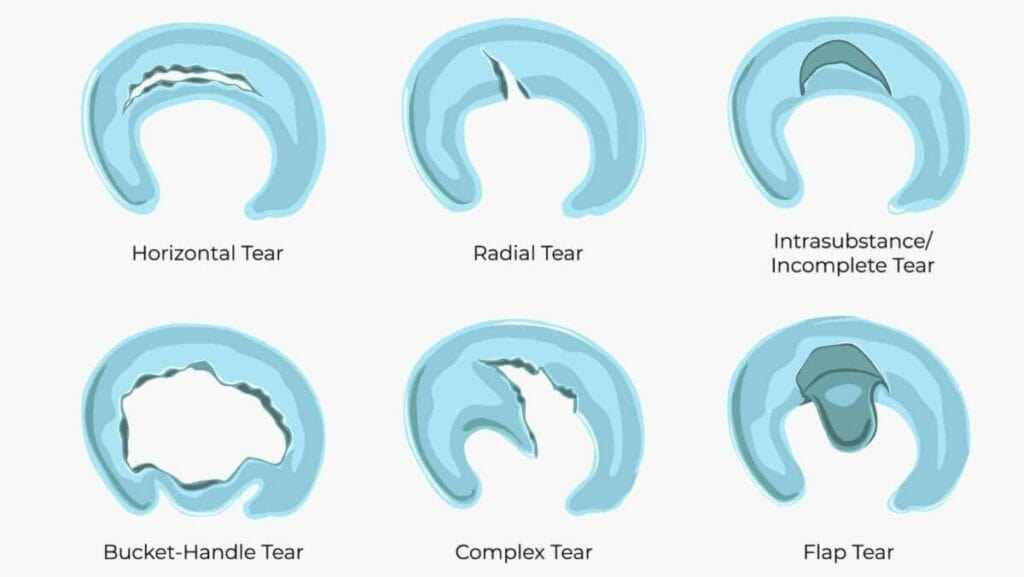What can cause a sharp stabbing pain in the knee that comes and goes?
- Best Asics Shoes for Flat Feet - October 25, 2024
- Best Running Shoes for Flat Feet - October 22, 2024
- Posterior Tibial Tendonitis - October 21, 2024
The knee is a complex structure that can cause a variety of pains depending on the movement being performed or the structure that’s affected.
This article will discuss the 5 most common causes of sharp, stabbing knee pain that comes and goes. We have provided links to the related articles for more details about each pathology.
Patellofemoral Joint Pain

The patellofemoral joint (the surfaces between the underside of your kneecap and thigh bone) can be caused by inflammation of the joint surfaces, wear and tear, or changes to the cartilage. Conditions such as Runners Knee, Chondromalacia Patella, and Patella Alta are three common causes of patellofemoral joint pain.
All three conditions will likely provide sharp, stabbing pain at the front of the knee with activities such as climbing stairs, running or squatting. This pain is often absent at rest and returns with activity.
Hoffa’s Fat Pad Impingement

Hoffa’s Fat Pad Impingement is a condition of inflammation of the fat pad at the front of the knee that sits below the kneecap. The fat pad is a bundle of fatty tissue highly innervated by nerves and blood vessels. If this structure becomes overloaded, it swells and can be pinched by the patella.
When this occurs, it causes a sharp and sudden episode of pain just below the kneecap. Kneeling or overextending your knee, especially when standing can exacerbate the symptoms.
Fracture
A bone fracture can feel like a sharp, stabbing pain when the bone is weight-bearing or when pressure is applied. At rest, the pain is more likely to feel dull or described as an ache. The most common fracture is the fibula, which is the smaller of the two bones of the shin.
A high fibula fracture can feel like sharp stabbing pain on the outside of the knee. A fracture to the tibial plateau or the femoral condyles will feel like a sharp stabbing pain in the knee. A less common fracture is a patellar fracture, which would follow trauma or a direct impact on the kneecap.
Osgood-Schlatter Disease and Sinding Larsen Johansson

Both of these conditions affect adolescents primarily but can rarely affect adults. Osgood-Schlatter Disease affects the bony prominence on the top of your shin bone when the bone grows faster than the tendon can adapt. Leading to sharp pain with impact activities such as running and jumping.
Sinding Larsen Johansson is a similar condition affecting the tip of the kneecap, where the quadriceps tendon attaches. Symptoms are similar to Osgood-Schlatter’s disease but felt in a different position on the knee.
Meniscus Tear

As your thigh bone sits on top of your shin there is a spongy form of cartilage that acts as a cushion and shock absorber called your meniscus. A tear to your meniscus can result from a twisting motion or repeated kneeling. The most common part of the injury is the medial meniscus, but it can also occur in the lateral meniscus.
When there is a significant tear there can be a noticeable crunching or click while the knee might lock or give way. Pain can occur insidiously and it is common for someone to wake up and notice sharp pain on the inner knee when walking or rotating their knee.
_______________________________________________________________________
We are specialists in treating foot conditions such as calf muscle tears, and you can see one of our Knee Specialists in our clinic in Fulham, South West London.
Related Articles
Pes Anserine Bursitis – Top 5 Mistakes After Knee Replacement – Baker’s Cyst
Feel Good, Move Well, Be Better
